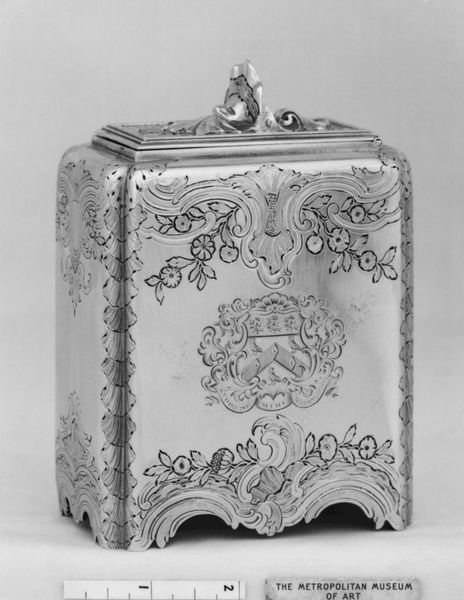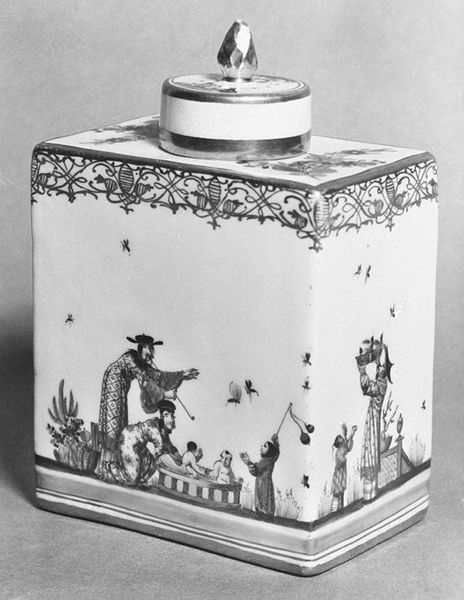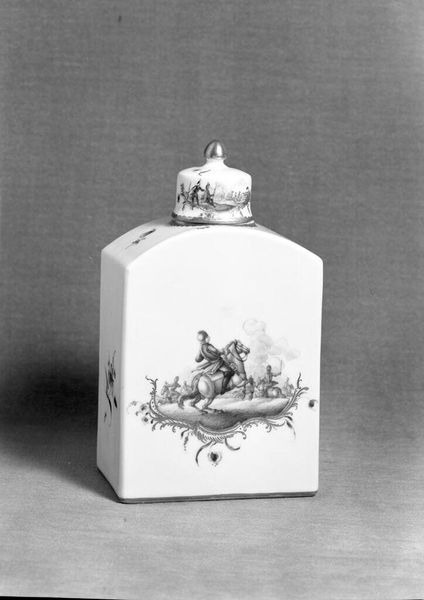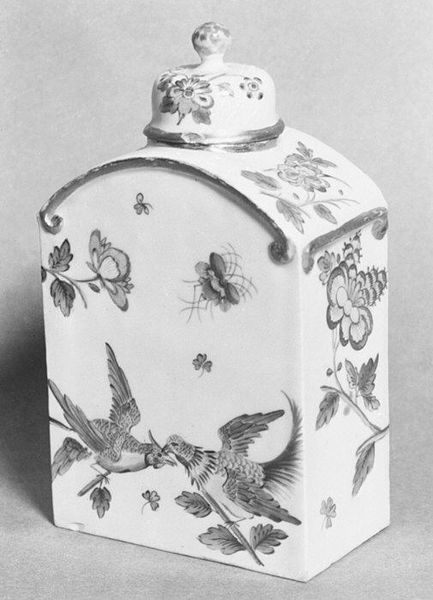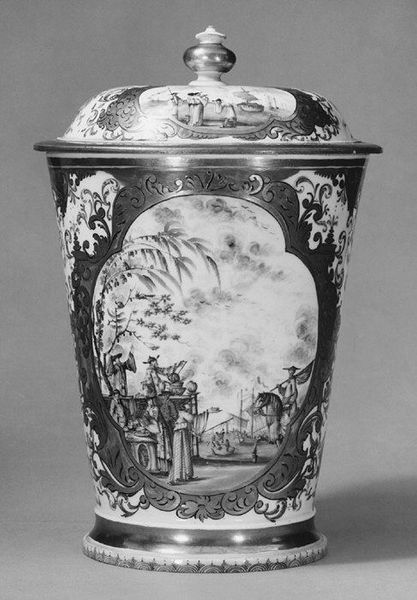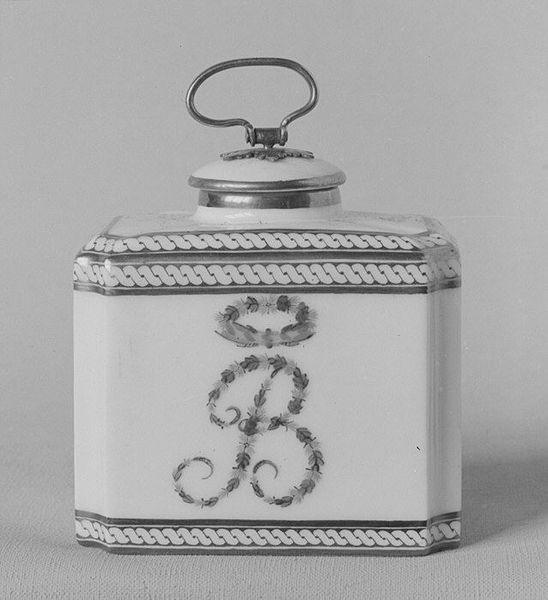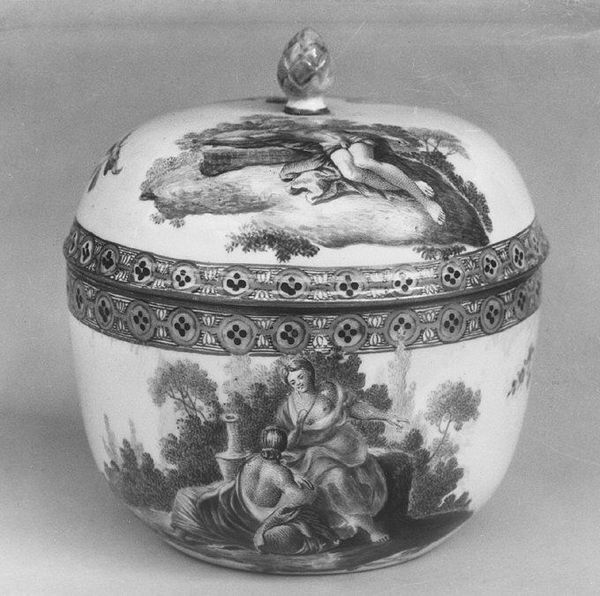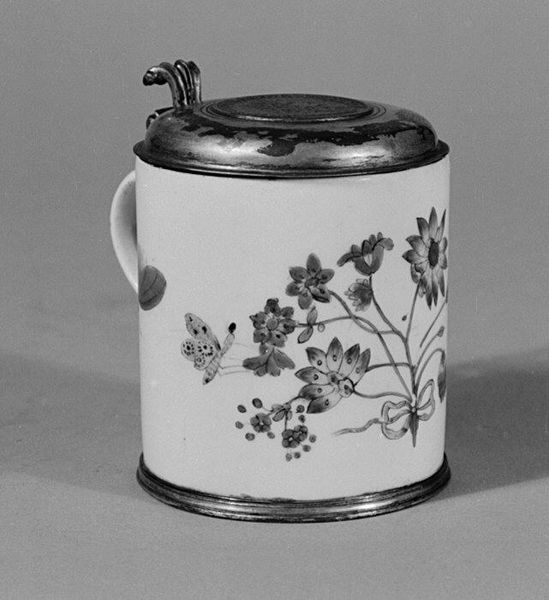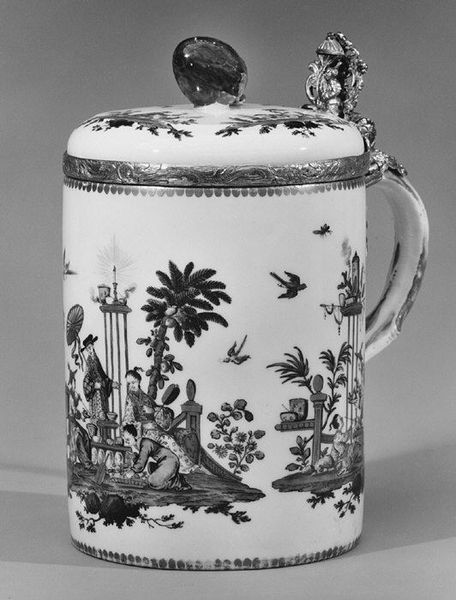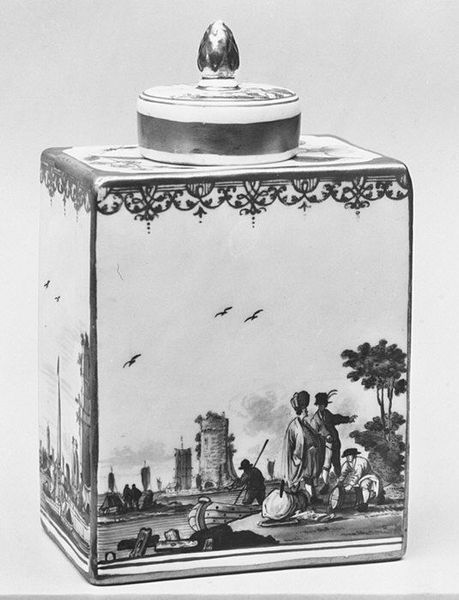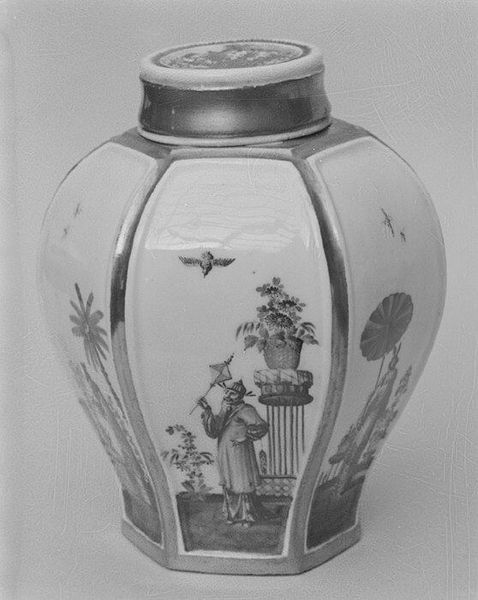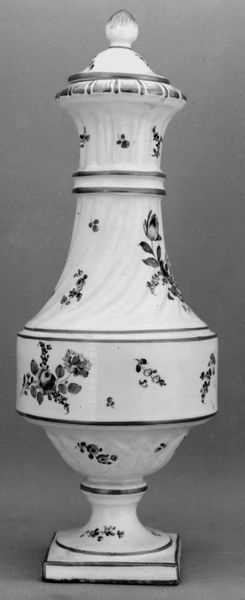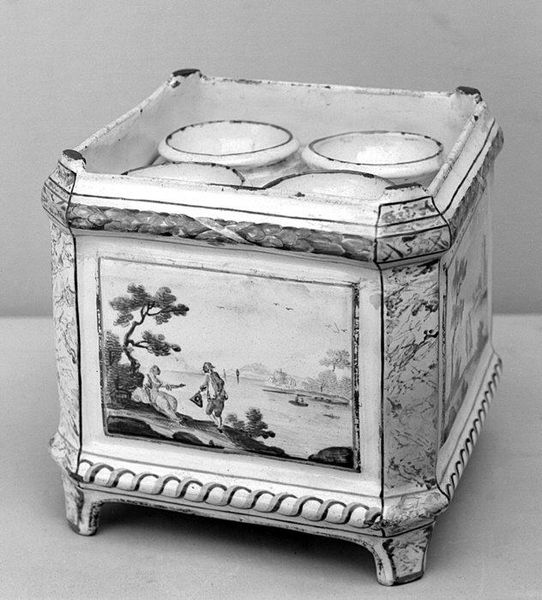
Dimensions: Overall: 5 × 1 7/8 × 2 3/4 in. (12.7 × 4.8 × 7 cm)
Copyright: Public Domain
Curator: Let’s consider this "Tea Caddy" crafted around 1730-1740 by the Meissen Manufactory, currently housed at the Met. Editor: The tea caddy’s porcelain surface is captivating, adorned with miniature landscape paintings. The delicate porcelain hints at luxury. How might we interpret its purpose through its material existence? Curator: This tea caddy’s existence speaks volumes. Porcelain itself, at that time, represented global trade, colonial exploitation for resources, and the channelling of Chinese techniques through European labour. The decoration - these landscapes- might reflect a longing for the natural world amidst increasing industrialization and the labor involved in obtaining and consuming tea. Does the preciousness of the material itself elevate the tea or highlight a societal shift? Editor: So, the object’s materiality intertwines with labour and consumption in that era? It wasn't just about sipping tea. Curator: Precisely. Who had access to these luxuries? Who toiled to provide them? Think about the journey of the materials themselves. Where did the porcelain originate, and under what conditions was it crafted and distributed? The value and design became integral to its function. Editor: It gives a completely different lens to view the object, highlighting societal factors over mere aesthetics! I guess I didn't quite realise how informative the means of production can be in assessing the value of an object! Curator: Absolutely, viewing the tea caddy through this lens moves beyond surface admiration into critical cultural evaluation of class and consumption. Editor: Thanks for helping me appreciate this artwork on a deeper level, considering materials and the way they were made is insightful! Curator: It shifts our perspective to question not just what we see, but how the work came to exist within those economic structures, and how art production often obscures that production.
Comments
No comments
Be the first to comment and join the conversation on the ultimate creative platform.
